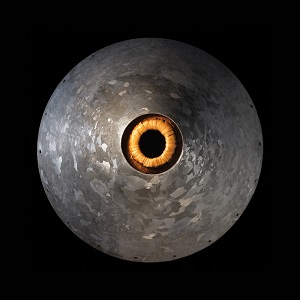 Secrecy and solitude are the twin engines spinning at the heart of Cores/Eruct, Noé Cuéllar and Joseph Kramer's first record on their own Category of Manifestation label. By the time album opener "Bluing" has ended and "Son Form" has begun its unusual cyclic canter, they have already constructed an enigmatic and isolated atmosphere. Though clearly recorded and rigorously performed, Coppice’s songs bewilder. They teeter on the edge of the familiar and flirt with recognition, but are comprised of sounds that evade identification. Those sounds are microscopic, magnified to the point of seclusion, and hermetic, as if trapped inside a great machine churning endlessly in the dark. That sense of perpetuity is what drives the the album. It plays out like an aural mise en abyme, each song, sound, and passage opening upon some aspect itself and spiraling endlessly in a confusion of levers, springs, and eerie melodies.
Secrecy and solitude are the twin engines spinning at the heart of Cores/Eruct, Noé Cuéllar and Joseph Kramer's first record on their own Category of Manifestation label. By the time album opener "Bluing" has ended and "Son Form" has begun its unusual cyclic canter, they have already constructed an enigmatic and isolated atmosphere. Though clearly recorded and rigorously performed, Coppice’s songs bewilder. They teeter on the edge of the familiar and flirt with recognition, but are comprised of sounds that evade identification. Those sounds are microscopic, magnified to the point of seclusion, and hermetic, as if trapped inside a great machine churning endlessly in the dark. That sense of perpetuity is what drives the the album. It plays out like an aural mise en abyme, each song, sound, and passage opening upon some aspect itself and spiraling endlessly in a confusion of levers, springs, and eerie melodies.
Bluing, a household product used to whiten clothes, is also the name of a process by which steel is protected against rust. The reason for its name is obvious. As a result of the iron powder or iron oxide used in the cleaning, the affected material takes on a blue complexion. "Bluing" has a similar effect on Cores/Eruct. It sets the stage for the strange and disconcertingly cryptic music that follows, music that is structured, repetitive, and translucent, and at the same time colored by ambiguity, variety, and opacity. Whatever Cuéllar and Kramer did when recording these songs, all of them compositions dating from between 2009 and 2012, it left behind a cold, woozy feeling and a dusky, unearthly glow.
The deliberate qualities in Cores/Eruct arise from Coppice’s compositional severity. These songs feature just a few sound sources and, in some cases, utilize only a few rhythmic variations. Much depends on minute changes and subtle additions. "Son Form," for instance, focuses on a single rasping figure, which turns and grinds repetitively from start to finish, becoming longer or shorter as time goes on. It sounds a little like an uncooperative engine with a faulty pull cord for a starter. This central element pans from the right to the left channel as minute noises chirp around it, but the main revolving structure stays the same throughout. "While Like Teem or Bloom Comes (Tipping)," the album’s 13 minute centerpiece, is more diverse—it is composed of more parts— but it shifts through a fixed number of identifiable sets: a melodic, somewhat droning sound, the click-clack of plastic keys against wheezing valves and escaping air, the rattle of a metal grille paired with whistling reeds and humming wooden pipes, the surface noise of plastic buzzing against plastic. This modular approach produces a controlled and song-like impression (think verses and choruses, exposition and development), emphasizing the compositional aspect of Coppice’s repertoire.
The same elements that produce that schematic quality are also responsible for the album’s most inscrutable traits. After a time, all of those whirling movements and looping parts blur and condense. The music feeds on itself, swells, and caves in, creating a bottomless sensation that is both mesmerizing and unsettling. It is less like falling into darkness and more like falling into a massive hall of mirrors; there should be a source for all of these images, but only more reflections keep coming. If there is a ghost in the machine, if someone is responsible for setting all of these events in motion, they stay constantly out of reach, haunting the music instead of staking a claim in it.
As with many of Coppice’s recordings, recycled and remixed elements play a significant role. A recognizable fragment from last year’s Vinculum (Coincidence) shows up on "Son Form," and there are likely other bits that have been pulled from the band’s deep well of sounds. This compounds the music’s fractal quality and cultivates its botanical, not-quite-wholly determined traits. Songs on Cores/Eruct grow and leap out of themselves carrying some semblance of their prior iteration with them. The arc of their evolution can be estimated at the right distance, but the details are difficult to measure precisely. Cuéllar and Kramer are responsible for performing the songs, but their content grows of its own accord and the music burrows into places the musicians could have never guessed.
samples:
 
Read More

